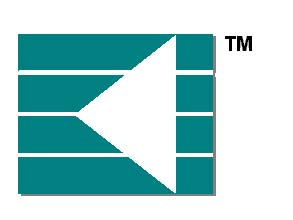An Economic Wake-Up Call
Am I the only one who feels the economy is getting to be like the weather? Everybody talks about it, but nobody does anything about it! (Mark Twain)
We can all agree that the present and protracted economic uncertainty is leading customers to be ever more cautious in their IT spending. But its not enough to continue to bemoan the situation: you need to actually do something about it or risk alienating your customers, partners, employees and stakeholders.
A year and a half ago we urged our readers and clients as a first step to intensify their concentration on customer service. Early this year, we began writing of the wisdom of expanding ones horizons by pursuing partnerships and M&A opportunities. Today, we add to the mix our recommendation for even more drastic action: not merely thinking outside the box, but busting the box altogether by thinking creatively about customers problems and innovating new ways to solve them.
Doing More with Less
Yes, Virginia, there is a need for organizations to do more with less
or at the very least, to do the same with the same! Most of the users
we talk to report that permission to spend on new technology is hard to
come by. Instead, their attention is being given to maximizing the value
of the systems they already have, and the performance of the workers using
those systems. Thats especially true of the internal application development
workers who are being handed more and more responsibility for your customers
business processes. Here are a few pieces of evidence from several different
directions to support this point.
- Oracles financial report for the quarter ended August 31 says that new software license sales were down 23% from the same period the year before. However, software license update revenues were up 9% over the same timeframe. This clearly indicates that while new customers are becoming increasingly hard to find, existing customers are looking to get more from the software they already own.
- BusinessWeek over the past several months has reported on federal statistics that consistently indicate worker productivity is strong and rising. While the thinking is that this strength has helped to keep serious economic problems at bay, it paradoxically also may be delaying a significant move toward recovery by mitigating the need for new hires, spending for additional capital equipment, etc. Either way, greater productivity is what results from successfully doing more with less.
- Open Text this month acquired messaging/collaboration infrastructure provider Centrinity to bolster its ability to help its customers work better together. This transaction suggests Open Text sees the same growing demand for communications and collaboration that we do (communications being one of the three elements of our MaxTVSM model for Maximizing Total Value), and it refreshing to see the company take such definitive action to meet it.
If we presume the economy continues on its present flattish course and theres no reason to assume it wont then the next step along the road has to be to move beyond merely improving the ability to serve customers with better-faster-cheaper offerings. Instead, a conceptual step backwards must be taken so you can adopt a broader view of the role you play and the need you fill. This means not only identifying new opportunities in terms of your current capabilities and how they may be leveraged which is how thinking outside the box has come to be practiced but actually redefining yourself in terms of how customers use your stuff and developing strategies from there. We call this busting the box altogether, and we see it as fundamental for any company that wants to do something about the economic weather.
Here are but a few companies that are busy busting boxes even as we speak:
- Cerylion has hit upon a technology architecture that facilitates context management in the way we first postulated it way back in 1997. At the highest level, it offers a creative way to orchestrate an infrastructure so users can develop and maintain a personalized interaction with intranets, extranets, and everything in between.
- ScanSoft has moved beyond its historical roots as a scanning company and now is treating text, image, and voice communications as mere variations on the content theme. Its gig today simply is input, and it has products that can capture information in any of those data types.
- Starfish is making wireless computing practical for enterprise computing use by concentrating on the way people access and use information, and fielding products that allow this to happen on mobile and wireless devices.
Your Assignment (Should You Choose to Accept)
Embarking down this road is really quite simple, as you need only start
with the same question your customers do: How do I
quickly find the
relevant information I need, even when that need changes constantly (Cerylion)?
Digitize information coming to me in a form, typed on a piece of paper,
over the telephone (Scansoft)? Use my PDA to access and work with up-to-date
information stored back in my office (Starfish)?
Whats hard is following through with what may appear to be radical departures from your usual approaches to product development, sales, and marketing. Though your customers will love it as soon as they see it, busting the box usually means redirecting your salespeople, reeducating the market, and reassuring your stakeholders, all of whom will take time to come on board.
Kinetic Information spends a lot of its time helping clients make this
very transition, and its clear to us that one of the most important ways
to do this is to find ways of eating your own cooking using on your
own processes the very technology you wish to sell other companies. By
so doing, youll quickly discover whats missing, what works, and what
the market most needs to hear, and thereby be in the best position possible
to weather the economic squall. Contact
Us for More
 Kinetic
Information Home
Kinetic
Information Home